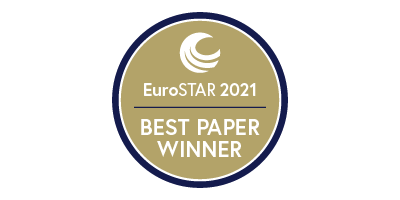What you will learn
- Accessibility Test Strategy.
- Inclusiveness in Software Development.
- User perspectives and automation.
Session Details
- Introductory
- 45 Minutes
- Includes 15mins Q&A
- Accessibility Testing
Session Speakers


Adonis Celestine
Director of Automation – Applause, Netherlands
Adonis Celestine specialises in making software testing easy and innovative for everyone. Adonis leads the Solutions Architect team at Applause. He finds nothing more satisfying than providing the right solutions to customers, solving their problems in a creative way, and contributing to the overall success. He has several years of experience in the Quality Assurance industry across customers in Europe. Adonis believes in a broader perspective of quality assurance, where the role of quality engineer goes beyond testing features against requirements. He strives to incorporate modern technologies to automate this perspective in his day to day job. Adonis also loves public speaking, and writes at his leisure. In this paper, he wants to bring in a broader perspective of quality assurance and how to adopt it.
Session Co-Speaker

Julia Zacharias
SVP EMEA Customer Operations & Accessibility Practice Lead – Applause, Germany
As SVP EMEA of Customer Operations, Julia has been managing the operative project business of Applause in Europe since January 2017. She is responsible for the onboarding of new customers, the support of existing customers and the expansion of the tester community in Europe. Julia works closely with Sales and Product development teams in order to keep the customer and tester satisfaction high, while keeping costs under control. Julia is a Certified Program Consultant for SAFe (Scaled Agile), and an avid public speaker. Since mid-2021, Julia has also been building and expanding the Accessibility Testing Practice in Europe. In this context, she works closely with her US colleagues, since the issue of accessibility is already much more important in this market than in Europe.
Stay in The Loop
Can’t wait for EuroSTAR 2026? Our 2-for-1 ticket offer is coming soon — pre-register now to be the first to know when tickets go live!